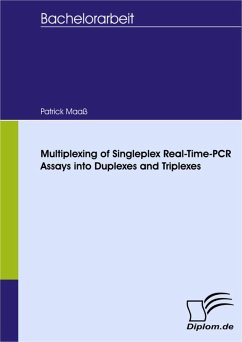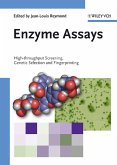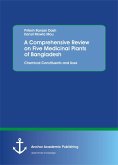Inhaltsangabe:Introduction: Breast Cancer: ¿Cancer¿ describes a group of various diseases, where cells start changing their molecular structure and begin to grow and to supersede normal cells. Cancer is induced by numerous different elicitors, which finally all lead to an interference of the genetically regulated balance between cell cycle and apoptosis. Although every organ in the human body can be afflicted with cancer, there are significant differences in frequency relating amongst others to age, sex, geographic region and personal habits. In the industrialized countries, breast cancer is the leading cause of death for women at the age between 30 and 60 years. With estimated 636.000 incident cases in the developed countries and 514.000 in the developing countries, breast cancer is the most prevalent cancer type among woman worldwide. Once detected, the cancer is classified based upon pathological characterizations of the tumor or a biopsy and the lymph nodes. A clinical way of characterizing the tumor is the TNM-classification, which describes the size of the tumor (T), the number of affected lymph nodes (N) and the existence of distant metastases (M). The histological classification characterizes the carcinoma according to its structural and cellular appearance and the amitosis rate leading to a grading from 1 to 3. An immuno-histological examination provides information about the estrogen- and the progesterone-receptor- and about the Her-2/neu-status. Breast cancer is a very heterogeneous disease. There are basic classifications that are unquestioned, even today. Recent studies confirmed the need to determine well known markers (i.e. estrogen (ER) and progesterone (PR) receptor status or HER2 status), but the large variety of subtypes and the corresponding different molecular pattern impede a uniform treatment. Although already today other factors than anatomical classifications are being taken into consideration, there exists a need for further biological markers to assist the physician in charge with his evaluation. Beside the diagnostic recognition, the choice of appropriate therapy and the prediction of prognosis are goals that should be reached in order to prevent early stage cancer patients from therapies that provide minimal benefit but reduce their quality of life by intense adverse reactions. RNA Expression Profiling and Prediction: Already today there are numerous genes associated with breast cancer occurrence, therapy [...]
Dieser Download kann aus rechtlichen Gründen nur mit Rechnungsadresse in A, B, BG, CY, CZ, D, DK, EW, E, FIN, F, GR, HR, H, IRL, I, LT, L, LR, M, NL, PL, P, R, S, SLO, SK ausgeliefert werden.









